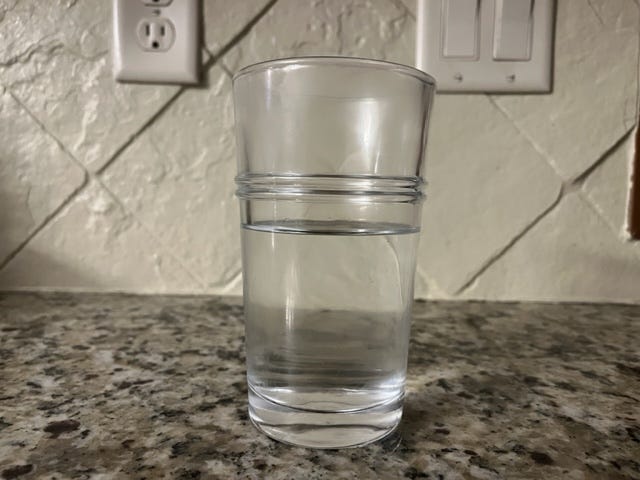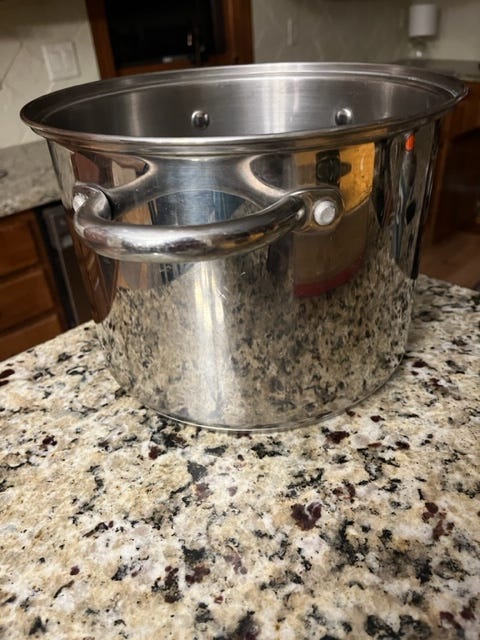We can take a shower again. Can flush the toilet, too. And, finally, today we can drink the water…without boiling it first. Late Tuesday night, a construction crew damaged a water line in Urbandale. That knocked out the water supply for 3,200 households. Two schools, too, including my daughter’s.
That meant no running water for us on Wednesday. If we used the restroom, we made sure that we really needed to flush the toilet and use up the precious tank’s worth of water that remained (there’s no need to go into greater detail about this).
The water supply returned Thursday but we had to boil our drinking and cooking water for the next two days.
Several sources I found online recommended boiling water for one minute to purify it. I took no chances. I let the pot boil at least ten!
By Saturday morning, the city gave the all-clear. We could resume our lives as we lived them pre-water main incident.
It’s been a pain in the butt for us this week. But we shouldn’t drown in sorrow for our water woes. Others have had it far, far worse.
Just ask families who live in Kimballton, the Audubon County town of about 300 people in west central Iowa. In July, they found out that they needed to drink bottled water. Boiling the water wouldn’t suffice to protect them from the high levels of manganese.
Here’s what one neighbor told KCCI-TV in Des Moines:
"It got really yellow, it almost looks like urine," Roger Anderson said. "We just kept drinking it, I thought we had a treatment plant that was working."
Urine.
I haven’t seen what caused the higher levels in Kimballton. I assume there are experts trying to figure this out. Someone needs to since residents dealt with this for more than two months. That’s a lot of bottled water.
City leaders said this week that the water is again safe to drink from the tap. Let’s hope that it never again looks like urine.
It’s not just folks in Urbandale and Kimballton who have dealt with water concerns. You had to skip a dip at one-third of the state’s beaches over the Labor Day holiday weekend. Too many toxins and too much bacteria in 13 state beaches, according to the Iowa Department of Natural Resources (as reported by the Iowa Capital Dispatch).
Why is there so much potentially bad stuff floating around in the water by our beaches? What’s causing this? I read this article by Donnelle Eller in the Des Moines Register this past week that warned of the disappearance of the richness of Iowa’s prized soil. And it takes more and more fertilizers to keep those bountiful harvests coming. And that could mean even more runoff in the waterways, right?
I realized this summer that I don’t understand enough about the quality of our drinking water or our lakes, rivers and streams. I remember back in 2010 that voters made water quality improvements a priority. And the vote wasn’t close as 63% supported the amendment. The plan was to raise the state sales tax to improve water quality and recreational efforts in Iowa. But lawmakers ignored that vote and never implemented the plan.
Here is something that I could not ignore. Longtime Mahaska County radio man Bob Leonard shared his account of a back and forth between himself and Mahaska County Republican state Senator Ken Rosenbloom. I’m not sure that I’ve ever read anything like it.
I could try to sum it up but I’m not quite sure how. This was a fight about water. But it was really about much more.
Read it for yourself here.
It’s lengthy but worth the read.
In the meantime, I’m going to go get another glass of water. Because I can. And because I didn’t have to boil this one first. Thankfully.
I write Dave Price’s Perspective as part of the Iowa Writers Collaborative, a group of three dozen independent writers across the state. Please check out some of the other writers and subscribe if you can.







Thanks, Dave. Thanks for reminding us it's precious resource we need to protect. And thanks for highlighting others who have it worse...
The city water treatment and distribution operators are the unsung heroes of this story. I sleep better knowing we have trained and certified men and women who work round the clock keeping our water safe to drink.